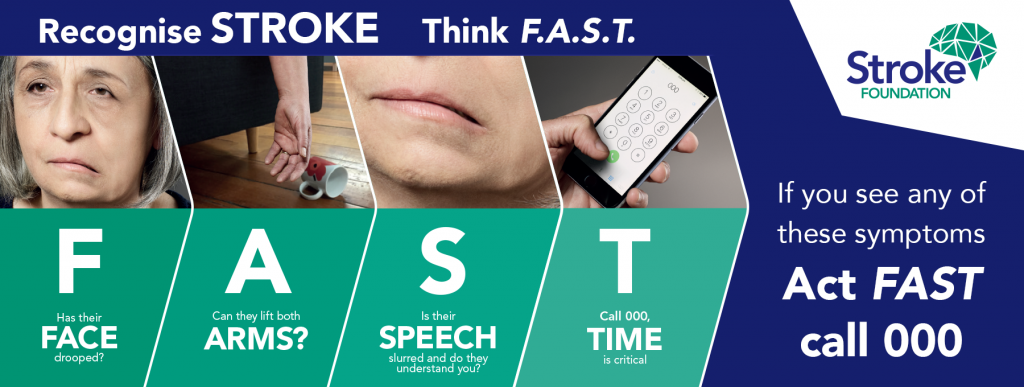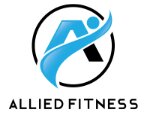Exercise and Strokes
Every stroke is different.
If yourself, someone you know, care or work with has had a stroke, chances are they probably don’t look or interact the same as anyone else who has had a stroke.Depending on the type of stroke, where the stroke occurred and the time of the response, each stroke recovery and rehabilitation is going to be different.
So, what is exactly is a stroke?
A stroke can be defined as a sudden interruption of blood to the brain. The three main types of strokes include ischaemic (blockage), haemorrhage (bleed onto the brain) or Transient ischaemic attack (TIA, a temporary blockage or mini stroke).
It is really important for people to be able to recognise the symptoms of stroke. You can do this by using the acronym FAST; Face drooping, Arm weakness, Speech slurred, Time for response (see image). The longer a stroke is left untreated the more damaging and serious effects it can leave.

Strokes can be caused by other co-morbidities including high blood pressure, diabetes and high cholesterol. Exercise Physiologists can work with high risk individuals to help prevent a stroke occurring and we can also help with rehabilitation following a stroke. After a stroke has occurred, patients may have problems such as paralysis or weakness, poor motor control, poor balance and/or depression and anxiety as well as many others. These symptoms can last from months to years.
So how can exercise help following a stroke?
Exercise can help in various approaches with the above-mentioned side effects that occur following a stroke. Each individual’s rehabilitation will be highly variable and individualised depending on the severity of their complications and their level of independence. When working with a stroke patient, different ways of training can benefit in the different ways including:
- Strength. Strength training is important with any limb weakness be it upper, lower body or core as it helps with day to day activities, re-training of motor patterns, gait and balance. If the stroke has left the individual to use a wheelchair or a walking aid, strength training can also help with transfers or when using the aid.
- Balance. Due to a decrease in lower limb strength or poor motor control due to spasticity, balance may be affected. It is important to train balance and proprioception to decrease the individuals falls risk which, if they occur may lead to further injury.
- Motor Pattern. Following a stroke, the individual may not have much control over their limbs. Neurologically, there is evidence that motor patterns need to be re-trained in order to improve. This may mean re-learning certain motor patterns like gait, getting up from a chair or picking up an object.
- Aerobic training. Aerobic training is just as important to aid with the patients’ risk of another stroke. If the patient is still considered high risk in terms of their cardiovascular health, it is important to manage this to avoid the recurrence of a stroke. This can also link in with improved motor pattern as it is generally high repetition based in nature. This can be quite taxing on the individual particularly on the mode of aerobic activity they are able to do which is why again each program is highly individualised.
- Flexibility. Improving Flexibility can also help to benefit limbs experiencing spasticity and can also help to improve day to day activities, for instance making it easier to get up off the floor or picking objects up off the floor.

Not only does exercise have a physical impact listed with all of the above ways, but it can also help mentally. Exercise causes a chemical response in the brain that helps to create a positive feeling within. We also work with the patient with their goals and work with their carers to create a positive social environment, again aiding with mental health.
At Allied Fitness Australia we currently do a lot of work with the NDIS and see a lot of clients following a stroke. We work closely with support coordinators, family members and the clients to help reach their goals. For those who are unable to reach our facilities we also offer home visits.
If you do have funding with the NDIS you can access Exercise Physiology services under both the improved health and wellbeing and improved daily living categories and our dieticians can be accessed under improved health and wellbeing. If you are self-managed, Agency managed or Plan managed we work with the nominated providers in arranging service agreements through to the delivery of services.
If you would like more information on how we can help you or if you are unsure on your funding or eligibility please get in touch and organise a complimentary consultation with one of our Exercise Physiologists or dieticians today.
